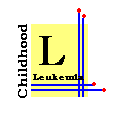

A diagnosis of the disease is done through examination of the blood and marrow cells. Usually, a marrow examination is performed to verify the diagnosis and obtain cells for analysis of cell types to subtype the leukemia. This is important as different types of leukemia have different ways of treatment and different protocols.
How a blood cell count is done
Keeping track of a child's blood cell count may become a way of life for parents whose children suffer from leukemia. Several actually have their own record-keeping sheet to keep track of their child's blood cell count.
How a bone marrow sample test is done
The patient is first put under local anaesthetic. Young children may also be given heavy sedation. A thin needle is inserted into the bone at the back of the pelvis (slightly above and to the right of the buttock). A certain amount of pushing and prodding is involved. Though this procedure is rather uncomfortable, in most cases, the patient will not experience much pain.
Most of the time, the story of a child's illness and a routine physical examination are what alerts the doctor to the possibility of acute lymphoblastic leukemia (ALL). Blood tests are done and bone marrow samples are taken for confirmation.
Confirming the presence of acute myeloid leukemia (AML) in certain cases may not be as easily as just taking blood and bone marrow samples. The blast cells obtained from the bone marrow sample may seem so abnormal and immature that special tests have to be performed to tell exactly what they are. Tests and diagnosis may take up to a few days. Tests of kidney functions and so on may also be done to assist in future treatment.
In chronic myeloid leukemia (CML), a blood test which shows too many abnormal granulocytes in the blood suggests the presence of CML. Verification of the diagnosis may be done when additional special tests on the bone marrow sample are done. A CT scan or ultrasound of the abdomen may also be necessary.
CT scan: Computed tomography is a sophisticated X-ray that produces cross-sectional views of the pictured area. The patient is given some fluid to drink or is fed intravaneously with a dye before the scan. The procedure take approximately 30 minutes, and though communication with the radiologist is possible, claustrophobic patients may feel anxious during the scan.
Ultra sound: In ultrasound, a microphone-type of device is used toi produce waves to obtain images of the inside of the body from the reflection of those waves.
Chronic lymphoblastic leukemia (CLL) is suspected when excessive lymphocytes are present in the bloodstream. Through further blood tests and/or a bone marrow sample, the suspicion can be confirmed. While certain cases of CLL require only blood tests to be indentified, other may require further tests, scans and X-rays.